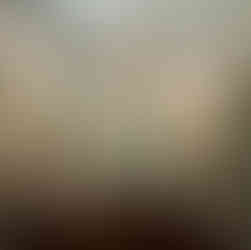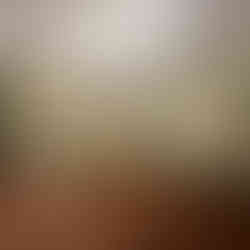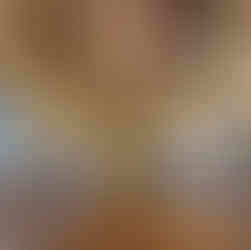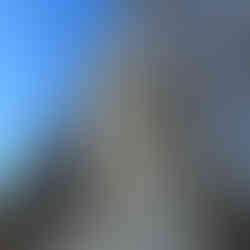Schönbrunn Palace
- Rosette Media
- Feb 28, 2024
- 4 min read
AN AUTHENTIC EXPERIENCE OF IMPERIAL HERITAGE
At the end of the seventeenth century Emperor Leopold I commissioned the Baroque architect Johann Bernhard Fischer von Erlach, who had received his training in Rome, to design an imperial hunting lodge for his son, Crown Prince Joseph, later to become Emperor Joseph I. Replacing the château de plaisance built on this site for the dowager empress Eleonora of Gonzaga in 1642, it was to grow into a palatial imperial residence over the course of the eighteenth century.

We picked up the pace and went to explore the Schönbrunn Palace (known in Austrian as Schloss Schönbrunn - love this name!) one winter day in January 2024, its marvellous gardens and to relive the splendor of imperial Habsburg royalty. Mr Michael Zisser, with over 20 years of curator experience, brought me on a detailed guided tour of the state rooms of Schönbrunn Palace, to secret passages and private rooms (not frequented by tourists), to discover the private apartments of the imperial couple Franz Joseph & Sisi, and the sumptuous rooms from the time of Maria Theresa (all these can only be assessed on the private guided tour). Among the many highlights are the stunning Chinese Cabinets and the priceless Millions Room.
A fine day in the resplendent atmosphere of historic, Imperial Austria. Schloss Schönbrunn is a must-see for every visitor to Vienna. Schönbrunn is a fascinating, easily accessible attraction with a genuine Imperial Palace, Children’s Museum, park, cafés and the oldest zoo in the world. Visitors encounter the Imperial heritage of the Habsburgs as a living experience, learn about European history, and acquire historical knowledge in an entertaining way.
Schönbrunn Palace is an UNESCO World Cultural Heritage Site. It is one of Austria’s most important cultural assets and since the 1960s has been one of the leading sightseeing destinations in Vienna. In December 1996 at the 20th session of the World Heritage Committee Schönbrunn Palace and Gardens was adopted into the list founded in 1972 of UNESCO World Cultural Heritage Sites. The entry into this world-renowned list underlines the significance of the palace and the entire garden complex as a Baroque synthesis of the arts.
Schönbrunn Palace is a unique Baroque synthesis of the arts – consisting of the former residential palace and the surrounding gardens. From 1569 until the end of the Monarchy in 1918, the complex was owned by the ruling House of Habsburg. Under the reign of Maria Theresa from 1745 on, the palace ensemble experienced its most brilliant epoch as summer residence and became the hub of courtly and political life. The Baroque interiors from the era of Maria Theresa and including the mid-nineteenth-century adaptations in Neo-rococo style have for the most part been preserved to the present day.
With the end of the Monarchy, the Imperial State assets and thus also the palatial complex of Schönbrunn were transferred to the ownership of the Republic of Austria. Although already partly open to the public during the time of the Monarchy, it was the twentieth century that saw the touristic usage of the palace state rooms being intensively promoted. In 1996 palace and park were listed as a UNESCO World Cultural Heritage Site. Today, Schönbrunn Palace is one of the top sightseeing destinations in Vienna and Austria.
Today, visitors to Schönbrunn Palace can get an impression of the royal and imperial way of life in authentically furnished residential and state rooms. Of around eighty palace rooms in toto furnished as historical interiors, forty-five rooms on the bel étage are open to public viewing. The tour starts in the residential rooms dating from the nineteenth century of Franz Joseph I and his spouse Elisabeth in the west wing of the palace. It leads on to the state rooms in the central part and the apartments in the east wing, occupied by Maria Theresa and her spouse Emperor Franz I. In the nineteenth century part of the east wing was used as the residence of Franz Joseph I’s parents – Archduchess Sophie and Archduke Franz Karl; these were used since 1880 as state rooms and, when needed, as guest rooms.
The various interior designs symbolise the lifestyles, atmosphere and political leanings of the individual Habsburg rulers. The palace park – most of it in its original state – can also be explored, with its imposing garden buildings and fountains from Maria Theresa’s dowager period (1770s). The most impressive features are the Neptune Fountain, the Obelisk Fountain, the Roman Ruins, the eponymous “Schöne Brunnen” – the “beautiful fountain” – and the Gloriette on the Schönbrunn Hill. In addition there are special attractions inviting visitors to linger, mainly based on historical models, including the Privy Garden, the Maze and Labyrinth, and the Labyrinthikon Playground.
Visitors to the Orangery Garden can stroll through the history of European horticulture, past Seville oranges, olive trees and myrtle. The Schönbrunn Orangery, 189 metres long and 10 metres wide, is thus one of the largest orangery buildings in Europe next to Versailles. Thanks to the still functioning original hypocaust heating system (via channels in the floor) dating from the mid-eighteenth-century, exotic plants that are susceptible to the cold can survive during winter at constant ten degrees Celsius.
The park at Schönbrunn Palace was opened to the public around 1779 and since then has provided a popular recreational amenity for the Viennese population as well as being a focus of great cultural and historical interest for international visitors. Extending for 1.2 km from east to west and approximately one kilometre from north to south, it was placed together with the palace on the UNESCO list of World Heritage Sites in 1996.

The Schönbrunn Group comprises the most visited attractions and programs of Austria’s imperial heritage: Schönbrunn Palace, the Vienna Furniture Museum, the Sisi Museum with the Imperial Apartments and the Silver Collection in the Vienna Hofburg as well as Schloss Hof Estate and Schloss Niederweiden. The Schönbrunn Group is tasked with maintaining and revitalising these cultural properties as well as developing new business areas and new ways of conveying culture.
The necessary means for this are entirely derived from self-generated proceeds. The group’s central function and passion is fascinating the audience with the imperial heritage and the world of the Habsburgs, be it directly at the sites of the Schönbrunn Group or via digital contents. The Schönbrunn Group’s sites are leading tourist destinations as well as popular sites for leisure and local recreation.
Web Info:
SCHÖNBRUNN PALACE
Schönbrunner
Schloßstraße 47 1130 Vienna






























Comments